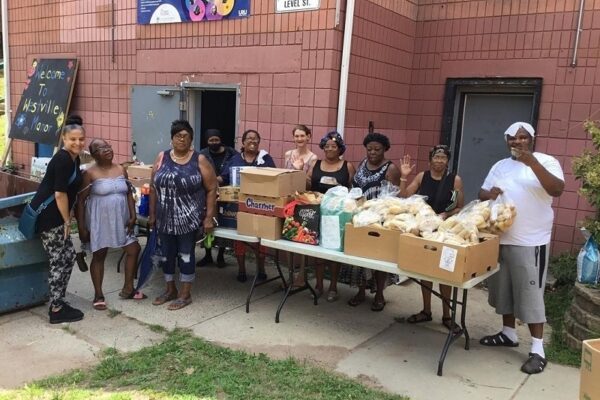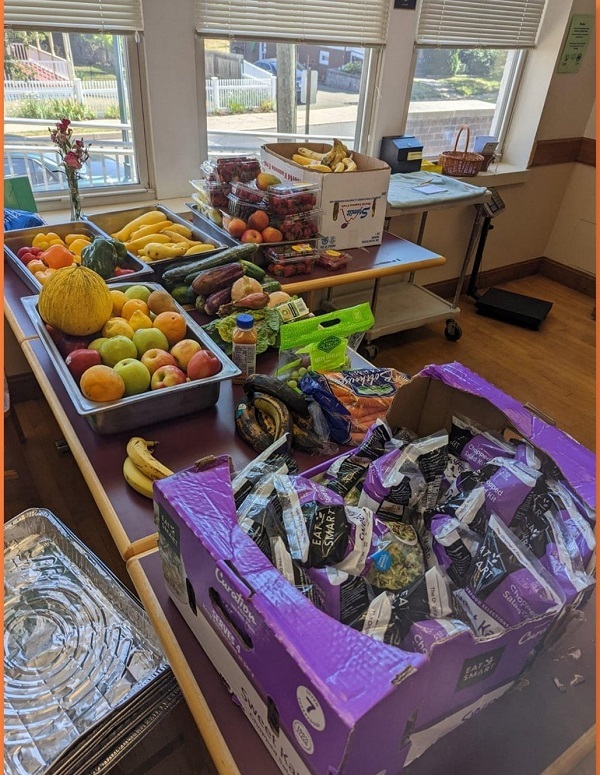Waste Not, Want Not: Haven’s Harvest Addressing Food Insecurity, Climate Change Through Food Recovery
New Haven nonprofit rescues and redistributes 1.5 million pounds of food in a year.

One way Lori Martin measures success is in pounds – 1.5 million pounds to be exact. That’s how much perishable food Haven’s Harvest, where Martin is executive director, recovered and redistributed last year to address food insecurity in greater New Haven.
“There’s a lot of wasted food that is still good, but with a timer on it,” Martin said. “Our mission is about how to get it to people [in need] who can eat it.”
Nationally, 40% of all food – roughly 119 billion pounds – goes to waste, according to Feeding America statistics. That’s the equivalent of 130 billion meals. At the same time, food insecurity is on the rise. According to statewide data from DataHaven, the number of food insecure adults in Connecticut was 17% in 2022, up from 10% in 2021. Among Black and Latino adults, those percentages were even higher – 25 and 34 percent respectively.
“With inflation, the cost of food is rising and the cost of housing [in Connecticut] is already high,” Martin said. “There’s a desperation in people who do not have enough money [for food].”
Over the past eight years – including officially incorporating Haven’s Harvest as a 501(c)3 organization in 2019 – Martin and her volunteers have worked to be part of an innovative solution. While soup kitchens and food pantries, which often rely more on non-perishable goods, have long been part of addressing hunger, food recovery – which emphasizes getting unused perishable and prepared foods to those in need – is a growing trend that is gaining traction.
And with good reason. The Environmental Protection Agency (EPA) estimates uneaten food across the United States contains enough calories to feed more than 150 million people – much more than the 35 million Americans who suffer from food insecurity.

“We need to educate consumers about waste,” Martin said. “A lot of people think a ‘sell by’ date is an expiration date and that food is still good.”
Over the past few decades, federal and state legislation has created liability protections for commercial food enterprises and nonprofits to donate perishable goods.
Volunteers, food providers and distribution partners have been vital to Haven’s Harvest growth and impact. Over the past five years, Martin estimates the number of food donors – including bakeries, grocers, restaurants and universities – has tripled from around fifty in 2018 to more than 150 today. Likewise, the number of distribution sites – which includes childcare centers, schools, low-income subsidized housing communities, and senior centers – has grown from eight to more than 275. Given the volume of food collected, Martin explained, the organization does not take requests from individual families, but works through organizations.
“We use a hyperlocal model,” Martin said. “If we receive the food on the east side of New Haven, for instance, we try to distribute it on the east side.” To coordinate the scores of weekly food pickups and drop-offs, Haven’s Harvest relies on nearly 400 volunteers, who use their own cars to keep the organization’s food distribution model working. That’s resulted in meals for tens of thousands of children, parents and the elderly across New Haven County.
“We’re a volunteer-driven organization,” said Martin. She notes that many of her volunteers have become more conscious of their own food waste and changed their habits.
But Haven’s Harvest is not only impacting hunger; it’s also helping address climate issues. Food waste, according to EPA figures, is the single most common material in landfills, accounting for nearly a quarter of all landfilled solid waste. Globally, food loss contributes nearly 8 percent of human-originated greenhouse gas emissions.
Martin is proud of the growth and impact of her organization, and is encouraged by an increased focus at both the state and federal level to make food recovery more widely practiced – including a recently released EPA toolkit for municipalities to achieve zero food waste. “That’s still our goal,” Martin said, “and I think it’s possible.”
What inspires you?
Creating a charitable fund makes a difference now and forever.
